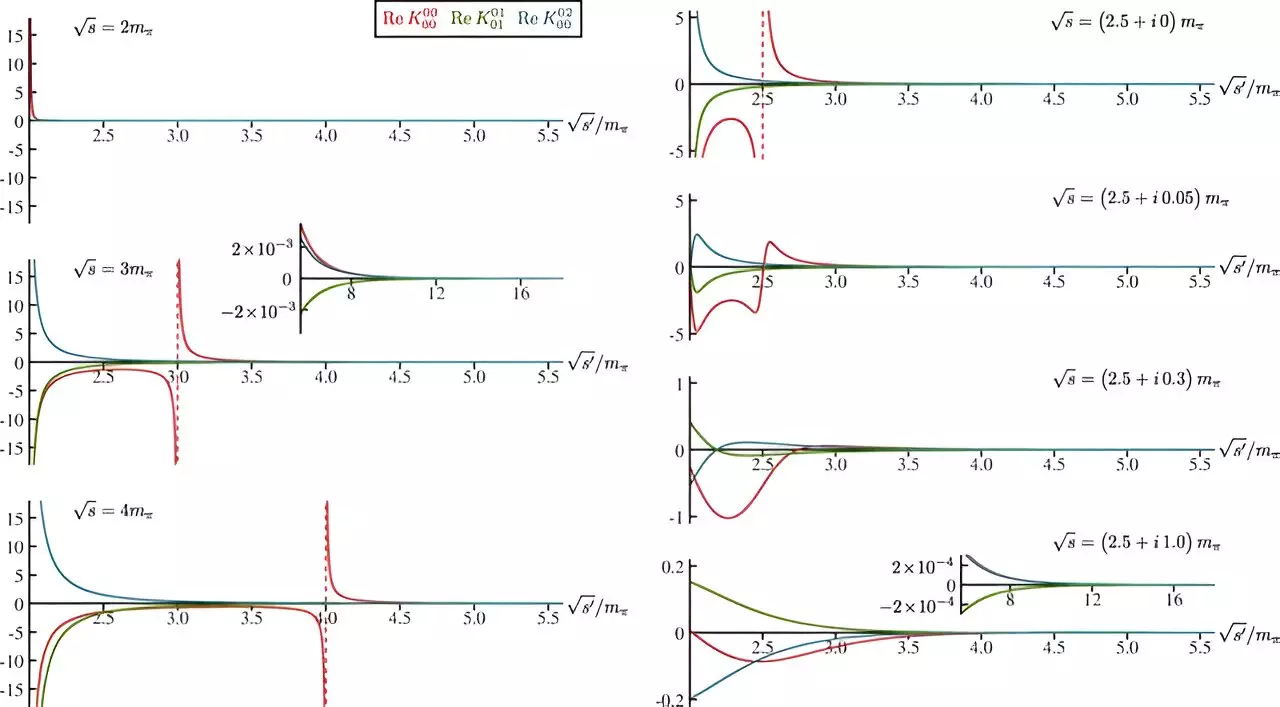In the realm of subatomic particles, the strong interaction represents one of the four fundamental forces of nature, binding protons and neutrons within atomic nuclei. While nuclear physicists have developed a foundational understanding of this force, recent advancements have unveiled new layers of complexity that demand further examination. A particular focus has emerged on one of the least understood particles associated with this force: the sigma meson. Researchers at the U.S. Department of Energy’s Thomas Jefferson National Accelerator Facility have utilized modern computational techniques to shed light on this elusive particle, revealing its potential impact on our comprehension of the fundamental building blocks of matter.
Understanding the Sigma Meson
The sigma meson is a unique composite particle, crafted from the collision of pions, themselves composite particles made of quarks. Unlike the more stable protons and neutrons, the sigma meson suffers from extreme instability, decaying into pions within a fraction of a second. It is regarded as the lightest unstable particle linked to the strong interaction, with a mass approximately half that of a proton. Despite its ephemeral existence, the sigma meson is thought to play a crucial role in nuclear processes involving protons and neutrons, making its study vital for nuclear physics.
Researchers, including Jozef Dudek and Arkaitz Rodas Bilbao, have acknowledged the sigma’s enigmatic status as a “long-standing weird guy” in particle physics. Traditional experimental methods have proven inadequate to fully characterize the sigma meson, necessitating a new approach that harnesses the power of advanced computing capabilities. As these researchers emphasized, the nexus of quantum chromodynamics (QCD)—the theory underpinning strong interactions—remains complex and eludes simple mathematical solutions.
Supercomputing: A Transformative Tool for Exploration
Enter the realm of supercomputing, a transformative tool that has become indispensable for modern scientific inquiry. In their groundbreaking study, the researchers utilized cutting-edge supercomputers to run virtual experiments, simulating pion-pion interactions to probe the properties of the sigma meson. This endeavor capitalized on the immense processing power of supercomputers at facilities like Jefferson Lab and Oak Ridge National Laboratory, where vast arrays of computing resources can handle complex calculations that would take conventional computers millennia to complete.
Rodas Bilbao emphasized the necessity of employing supercomputers for this investigation, humorously noting the impracticality of waiting hundreds to thousands of years for results from a conventional laptop. Through this advanced method, the researchers aimed not only to recreate these fundamental interactions but also to extract valuable insights about the sigma meson’s characteristics. In doing so, they hoped to bridge the gap in understanding of the strong force and its implications for the very constitution of matter.
Innovative Mathematical Techniques and Collaboration
A pivotal aspect of this study hinged on innovative mathematical techniques that guided the researchers in applying constraints known as “dispersion relations.” This methodology enabled the team to delve deeper into analyzing the intricacies of the sigma meson’s properties and its role within the strong interaction. However, such a feat required a confluence of expertise; Dudek, Rodas Bilbao, and Robert Edwards combined their skills in both theoretical physics and computational applications to tackle the challenges they faced.
The collaboration is emblematic of the broader trend observed in contemporary scientific study—cross-disciplinary partnerships often lead to significant breakthroughs that single entities might struggle to achieve independently. As Dudek noted, the collaboration illustrates a synergy of skill sets that is indispensable in unraveling the complexities of fundamental particles.
Addressing the Challenges Ahead: Future Directions
While the researchers have made significant strides toward understanding the sigma meson, the journey is far from complete. The current calculations represent just the initial phase, and considerable challenges remain, particularly in refining the masses assigned to quarks in their models. The researchers need to bring these parameters closer to their actual values to provide more accurate representations of the sigma meson and the phenomena surrounding it.
Moreover, the findings from this study pave the way for future investigations into other particles with similar properties, such as the kappa. As scientists continue to deploy advanced computational methods to untangle the enigma of these particles, we inch closer to understanding the intricate dynamics of the strong interaction.
The work being done at Jefferson Lab and associated facilities signifies an exciting era in nuclear physics, where the collaboration of theory, computation, and experimental inquiry stands to redefine our understanding of matter itself. The sigma meson, often seen as an enigma, may very well hold the key to unlocking profound mysteries about the fabric of our universe.


Leave a Reply